May 17, 2025 – Veterans of North Country Honor Flight #60
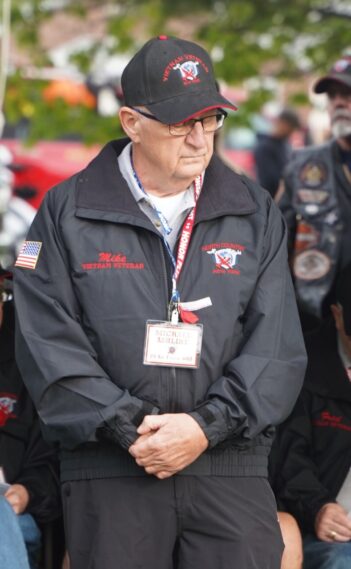 Michael “Mike” Ashline – US Air Force 1972-1988 Vietnam Era
Michael “Mike” Ashline – US Air Force 1972-1988 Vietnam Era
After signing up for the Air Force, Michael, together with his friend Tom, would arrive in San Antonio for basic training. Parting ways after basic, Michael would head to Lowry AFB to receive training as a Material Inventory Management Specialist. While completing his technical training, Michael would get married.
Newly married, his first assignment would send him for 4 years to North Truro AFB, which he describes as a small base in the middle of nowhere. From there he would spend his next 7 years at Loring AFB, with a new specialty assignment as Open Mess Management Supervisor. Michael would exit the military at the end of his time at Loring AFB. Deciding to re-enlist he would spend 5 cold years at Grand Forks AFB in North Dakota.
Moving from the cold, Michael would head south, joining the Texas Air National Guard at Fort Bliss as a Security Specialist. Here, in his final 3 years he would get to set up foxholes, conduct Air Guard desert training, and taught Claymore mine classes.
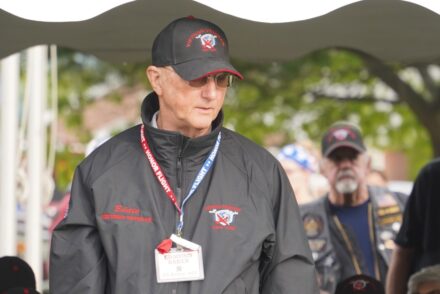 Edmund “Ed” Baker
Edmund “Ed” Baker
US Army 1966-1968 Vietnam
Ed’s life would find direction from his guardian uncles after the passing of his parents at the age of six. Although his Dad served in the Navy, his uncles were Army men, serving in WWII and Korea. He would follow their path into the US Army.
Ed completed Basic Training and Advanced Infantry Training at Fort Jackson, South Carolina. He achieved Expert with M-14 rifle and was Pugil stick champion of his company. In AIT, he competed in Boxing. With an 11Bravo MOS, Infantryman, he received his orders for combat operations in Vietnam with the 1st Division.
He remembers many close calls, but two stand out. The most vivid was an ambush. He was riding in the open rear of a deuce and a half truck. The driver was hit, and the truck stopped and began backing down a hill. Lying flat, face up, he saw tracers zip right by his nose and heard the clink of metal all around him. When the enemy stopped to reload, he jumped off the truck, returning fire. The men with him, new recruits, started firing back and the enemy disengaged.
Another time, when pulling point, Ed’s squad was radioed back to check their weapons. When he test fired his M16, it fired one round and jammed. The company that went out instead of his was hit hard and took many casualties.
During the TET offensive of 1968 he remembers frequently sitting in bunkers listening to exploding mortars and rockets. With less than a month left in Vietnam, he wondered who among his fellow soldiers would make it home.
Ed finished his enlistment at Fort Hamilton in Brooklyn, NY. There he was met with anti-war demonstrations. On a visit to Plattsburgh, he was greeted with a slap in the face from a girl he knew. In contrast, his service was recognized when he was honored by the Massapequa VFW. They asked him to carry the colors in a 4th of July parade. This exemplified how divided Americans felt about the war in 1968.
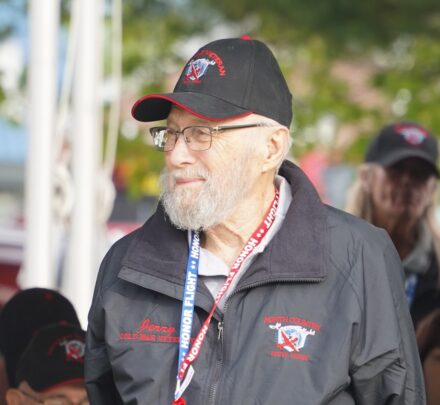 Gerald “Jerry” Bates – US Army 1954-1956 Cold War
Gerald “Jerry” Bates – US Army 1954-1956 Cold War
Volunteering for the US Army, Gerald would report to basic training at Fort Leonard Wood, followed by Fort Bliss for AIT. Preparing for a rigid inspection by the Top Sergeant, Gerald would find that he had run out of Army shorts. The PX didn’t have any, so he would resort to drawing on what he hoped would have the appearance of snaps, which of course didn’t work. He would be sent out for sign painting duty.
Expecting to be shipped overseas after training, the Army would instead send him to New Jersey to be part of the crew to close down the base. While there, they would be called to give blood to a crew hit by an artillery round.
Assigned to Frankfurt, Germany, Gerald’s crew would be the first common crew of enlisted to be airlifted to this destination. As part of the 4th infantry division, Gerald was assigned to drive recon by the Captain. Gerald would ask “What if I don’t want this assignment.” The Captain told him “they could find something else for him.” Gerald thought it was best to do as the Captain asked, knowing a new assignment would not be to his liking.
While on a joint military exercise in the mountains, his platoon sergeant witnessed aggressors looking to withdraw. His vehicle would not start. He had to stay alone until they could arrange to get him down the mountain. He had a machine gun, and they told him to fire off rounds if he had a problem. It would be an interesting journey being towed down the mountain, snapping the rope twice, running on narrow roads between 30 to 40 miles per hour.
While in East Germany, Gerald witnessed a tangible resentment by the East Germans and their struggle to be occupied by Russia. Click “Read More” to continue.
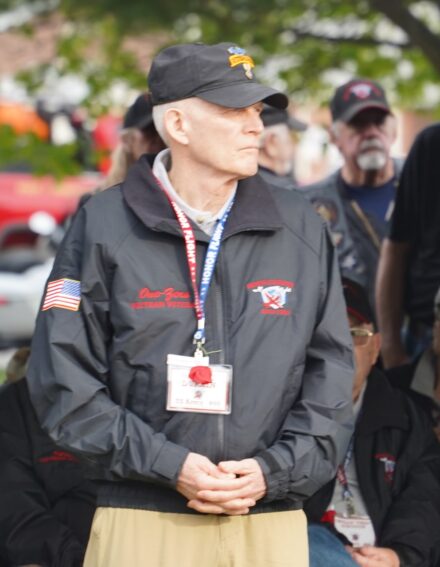 Robert “Bob” Durkin – US Army 1963-1970 Vietnam
Robert “Bob” Durkin – US Army 1963-1970 Vietnam
At a young age, Bob knew he wanted to be in the Army. He began his military journey by completing a four-year degree at Penn Military College. After college, he attended basic officer training, Army Ranger, and Paratroop schools. Elite Ranger units often work with Elite Navy SEAL units. Within four months, the class started with 300 soldiers selected to try to become Rangers, but by then, only 150 remained in the program.
While with the 101st Airborne Division, Bob sometimes spent up to a month living deep in the jungle. The 101st ceased to be a paratroop division on August 4th, 1968. Bob is well known as the “Last Paratrooper in the 101st,” as he led the last air assault of the 101st Airborne, followed just days later on August 4th, leading a famous 1,000 man air assault as the newly designated 101st Air Mobile Division where the chopper he was riding in was shot down and crash-landed in the landing zone. He continued coordinating the fight through the jungle to what later became known as “Hamburger Hill.”
While in Vietnam during one battle, he would survive by playing dead among the dead soldiers all around him. Bob enjoyed being called “One-Zero” instead of “Sir” by his troops as a sign of respect. He always considered himself part of a great team, not just their commander. Each man was just as crucial to the team as he was!
During his military service, Bob served as battalion executive officer in Germany of the 509th Airborne, and was later selected to be the commander of the 7th Army Skydiving Parachute team. He also became the “Hero” of Camp Eagle when he headed off to the nearby Marine Base, where he procured a double outhouse for the Army troops under the noses of Marine Guards.
Bob’s service citations include: Ranger Tab, Parachute Badge, Vietnam Service Medal with four battle stars, Purple Heart, Combat Infantryman Badge, Bronze Star Medal, The Air Medal, The Army Commendation Medal, and Vietnam Campaign Medal with w/Device, Vietnamese Army Service Medal, National Defense Medal, and can wear the Cross Of Gallantry issued to his unit.
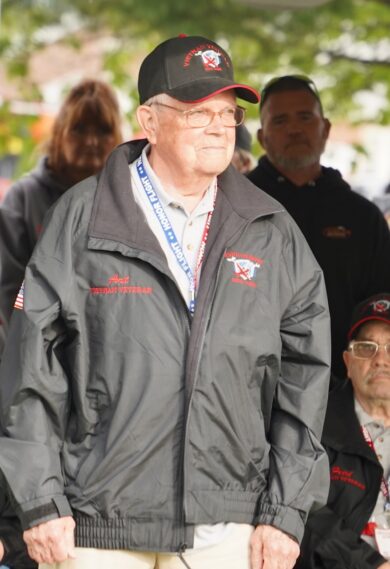 Arthur Graves – US Army 1962-1964 Vietnam
Arthur Graves – US Army 1962-1964 Vietnam
Arthur would complete four years of college at an all-men’s school in Buffalo, where he would drill as a core cadet. After college, he would report to the US Army at Fort Devins for his 7-week basic training, then on to Fort Gordon for 3 months of training as a signal officer.
After training, Arthur would move on to three major field exercises: Cooley Crist at Fort Lewis; Swifts strike; and Desert Strike. While at Desert Strike, the biggest and last of the field exercises for the Army, Arthur, at only 22 years old, would be met by a 4-star General arriving by small bubble helicopter. As a first-timer in the desert, Arthur found out quickly from a sergeant by a kick of an ant hill, that you should stay away from them if you wanted to plant a communications pole.
His platoon of messaging, cable, radio relay and carrier equipment would head out to travel in a large convoy across the United States. During this convoy, Arthur would receive a message offering him airborne training. This would return him to Georgia.
During his service, Arthur would receive assignments as company commander of the 966 Ordinance; he would perform reserve force training at Fort Drum with high-scoring outcomes from his units; he would serve as a liaison officer to West Point; and would be a proud member of the honor guard unit in front of the post commander recognizing President Kennedy after his assassination.
Arthur’s service years would shape the rest of his life. His duty to serve would provide him with knowledge, experience, responsibility, and the drive to do his best.
Dana Harnish – US Army 1965-1985 Vietnam
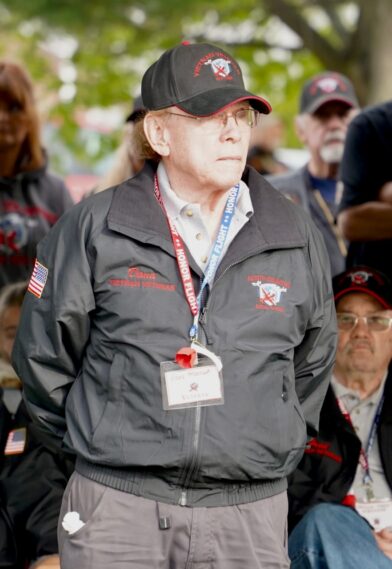 Dana had been attending college as a pre-med student. Although his father had served in the military as a cook for a 2-star General, he had not given much consideration to the military until he was drafted into the Army.
Dana had been attending college as a pre-med student. Although his father had served in the military as a cook for a 2-star General, he had not given much consideration to the military until he was drafted into the Army.
Upon entry, he would head to Fort Gordon for both basic training and AIT in 11B10 infantry. At Fort Sill, he recalls being woken up at 5:30 to carry their footlockers on their shoulders around the track 10 times. Not all make it. He completed officer candidate school during his 7 months at Fort Sill.
Married just 6-weeks, Dana would begin a 1-year assignment to Korea. He would be on alert during the capture of the USS Pueblo. Leaving Korea, he would head to Fort Benning, assigned to the only field artillery in the Ranger department.
Sent to Vietnam in December 1969. Dana would remain there until April 1971. He would serve as commander of the 105th Artillery Battery, the top field officer of two field forces, and later extend his tour with the 155th Self-Propelled Battery at Katum Camp, just off the border of Cambodia.
Sent back to Fort Sill, he would escort guns from battery back from Vietnam. As part of the 9thMissile Battalion, Dana, as Battery Commander, would undertake the training of the nuclear-capable Pershing missile.
Over Dana’s 20 years in the Army, his best four years were spent in Alaska, where he was able to engage in his love of hunting and fishing.
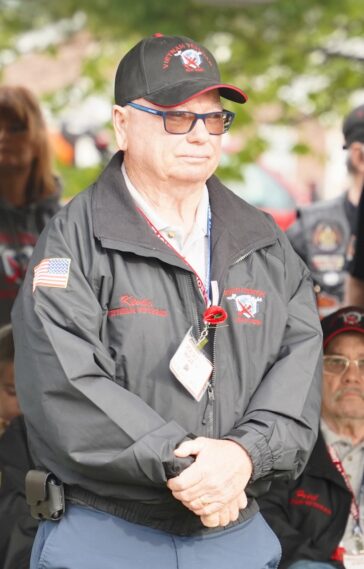 Kevin Hoey – US Navy 1969-1973 Vietnam
Kevin Hoey – US Navy 1969-1973 Vietnam
Assigned a low draft number, it was certain that the military would be in Kevin’s future. Not choosing to be drafted, Kevin and a couple of friends would enlist in the Navy. They would head to boot camp together, but would then be assigned to opposite coasts.
Kevin would complete his basic training at Great Lakes Naval Base, and from there it was on-the-job training, learning basic knot techniques, refueling, rearming, running stations, watch duty and some signaling. Out at sea, 20-to-30-foot swells would have some transferring out with deathly seasickness. Kevin would adapt quickly to life aboard ship.
His first assignment would place him on the USS Henry W Tucker destroyer. They would be very active, providing naval gunfire support up and down the coastal shores of Vietnam. Kevin’s last duty assignment would place him on the USS Worden, a carrier, with operations assigned off the coast of Japan.
During his enlistment, Kevin would be called home for the passing of his father. Watching the news, he would learn of an attack on his ship. The one casualty would be the soldier at his post. He would not share this information with his mother as she was already worried about his return to service.
In the naval tradition, Kevin would celebrate the equator line-crossing ceremony, moving sailors from slimy pollywogs to trusty shellbacks. It is with this tradition and honor that Kevin looks back on his 4-year military service with absolute pride. He is resolute in his commitment, with no regrets. He would do it all over again. His service would lead to a Vietnam service medal, a Republic of Vietnam Campaign Medal with Device, and an Armed Forces Expeditionary Medal.
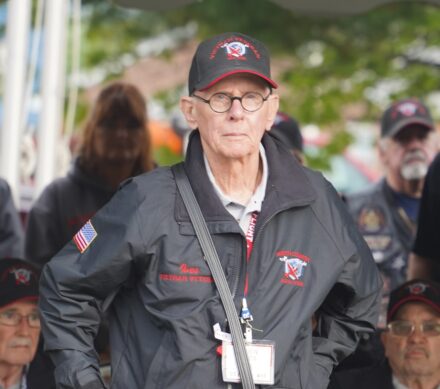 John Ives – US Army 1970-1972 Vietnam
John Ives – US Army 1970-1972 Vietnam
John’s draft status would remain exempt until he completed his medical residency. As a physician psychiatrist, John would then be subject to the Doctor draft. He would complete a quick basic training at Fort Sam, and was then deployed to Long Binh Post in Vietnam.
As a psychiatrist, John would spend most of his time working with soldiers for drug treatment. There was no expectation for him to problem-solve. As a physician, he would be charged mostly with detoxing, attempting to scare soldiers into good behavior, and sending them back into combat.
With the Golden Triangle for growth, refinement and distribution of heroin present, it made it very easy for soldiers to gain access to 95% pure heroin from any mama-san for $5. John worried that American soldiers would return home with heroin addictions, but due to the extreme differences in purity and cost, this thankfully did not become the problem he anticipated.
As a loner, John was surprised at how close a bond of comradeship was built within the hooch living space. After the war, he would reconnect with a group of veterans for several hiking and kayaking trips.
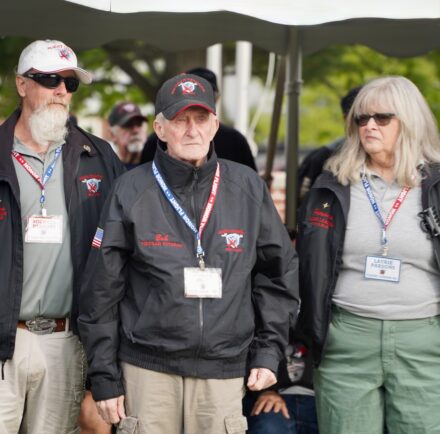 Robert “Bob” Jock – Marine Corps 1966-1968 Vietnam
Robert “Bob” Jock – Marine Corps 1966-1968 Vietnam
Bob would choose the Marine Corps over draft into the Army. As the sole surviving son, he could have avoided the service, but has no regrets regarding his decision to serve.
On arrival to Parris Island for boot camp, Bob recalls it as being the worst day of his service, ranking over being shot at. The drill instructor would immediately be on them. Seeing a swamp nearby, he wonders if he could swim away. Weighing in at only 118, Bob would eat plenty, as they would take food away from the heavier guys and give it to him. Bob and a buddy would present themselves as a bit scruffy one day. This would result in a ruined razor being handed to both. They would not have an easy, clean shave.
Bob would remain at Parris Island for advanced training in demolition and mine-sweeping. During this training, Bob would drop a detonator cap on his instructor’s foot. As you can imagine, that did not go well for Bob.
Headed to Vietnam, Bob’s platoon would make a beach landing in the hottest of temperatures. While there he would secure areas and cargo, and go out for injury recovery. Bob would find a peach pitt shaped into a little monkey; this would be considered a lucky piece desired by others. Asked if he would gift it over to another, it would end up lost during one of his adventures.
Bob would earn the following commendations during his service: the National Defense Service Medal, the Vietnam Service Medal w/one star, the Vietnam Campaign w/1960 Device, and Marksman and Rifle Badges.
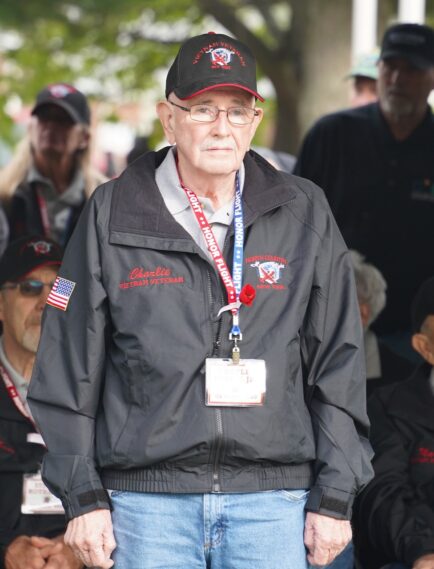 Charles Lustig, Jr. – US Army 1966-1968 Vietnam
Charles Lustig, Jr. – US Army 1966-1968 Vietnam
After completing 1 year of college, Charles would be drafted into the US Army. Living in New York City at the time, Charles would go to Fort Jackson for induction. He would be sent to Fort Hood for basic training, then off to Fort Gordon for AIT, spending 17 weeks in advanced training in his MOS, Field Radio Repair.
While at Fort Gordon, the Army would lose track of Charles’ location, leaving him in place for a couple of weeks. Found, Charles would be sent to Oakland Army Base in California. This base would serve as a main entry portal to Vietnam. Arriving in Vietnam in April 1967, trained in radio repair, he would be asked if he could type. Since he was able to, they switched him to the position of shop clerk.
Charles felt a close bond with his fellow soldiers during his service. In the hooch, they would have a mini-refrigerator, everyone else would have their drinks taken except for Charles. No one else liked the unsweetened grapefruit juice he liked to drink.
Returning from Vietnam in January 1968, Charles would exit the Army from Fort Dix. He would later enter the Army National Guard in 1981, where he would remain in service until 2004.
John continued his passion for radio communications as a ham radio operator as a civilian.
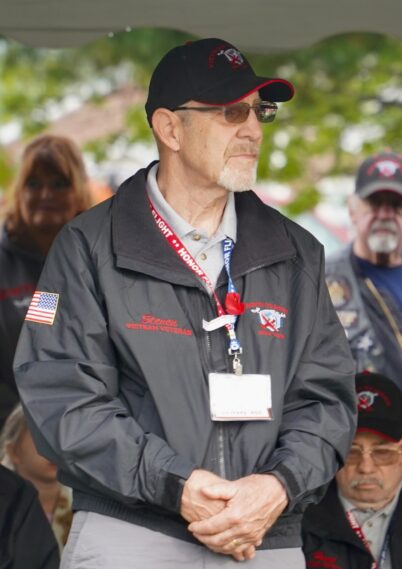 Steven Rothamel – US Navy 1967-1971 Vietnam
Steven Rothamel – US Navy 1967-1971 Vietnam
Steven was committed to honorably fulfilling his duty to serve his country, just as his father did before him. Together with a buddy, they would select the Navy as their branch of service. A higher score on an exam would send Steven out first. His naval choice also offered him the opportunity to get the desired education for a more secure future.
The Great Lakes Naval Base would serve as Steven’s location for basic training and for his advanced training as an Electrician. This training would send him below deck of the USS Ticonderoga where the swells from the sea would carry the sounds of creaking bulkheads. As a “snipe,” he would perform the duties of an electrical technician.
Steven would spend nearly 3 ½ years aboard the USS Ticonderoga, spending time at Subic Bay in the Philippines, as well as sailing three cruises into the West Pacific. In transit to the USS Ticonderoga, Steven’s seabag would go missing. He would be forced to board the ship with nothing more than the clothes on his back. Thankfully, his shipmates would provide needed items until his seabag was found and returned.
During his service, Steven received the National Defense Service Medal, the Vietnam Service Medal, the Republic of Vietnam Campaign Medal, the Armed Forces Expeditionary Medal, Republic of Vietnam Armed Forces Meritorious Unit Citation Gallantry Cross, Navy Unit Commendation, and Meritorious Unit Commendation Ribbon.
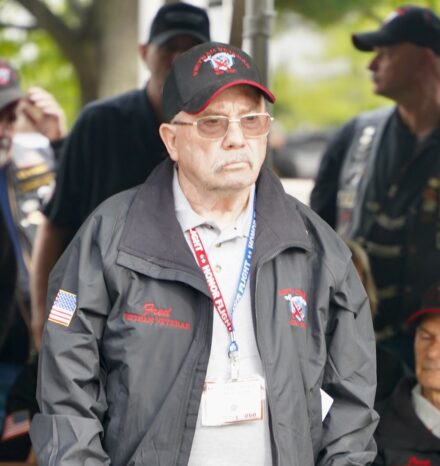 Orville “Fred” Scroggin – US Navy 1960-1964 Vietnam
Orville “Fred” Scroggin – US Navy 1960-1964 Vietnam
Fred would choose to join the Navy with his cousin. In the process, he would be placed on hold for registering high sugar levels during his physical. His cousin did not want to wait and would enter the service before him.
Finally passing his physical, Fred would be sent to the Great Lakes Naval Base. Here he would complete both basic training and a 3-month AIT. His early training would include deck hand and mess cooking, but much of what he learned would come from his on-the-job training.
His first assignment would take him to a submarine base in New London, CT, where he would work mostly in the barracks. From there, Fred would receive an assignment working as a mess cook at the Newfoundland Naval Base. While serving in Newfoundland, Fred would also find himself on desk duty. Manning several phones, if the “Red” phone rang they would go out for crash recovery. He would also get to see Bob Hope and his troop show of celebrities while stationed there.
His next assignment would bring him aboard the USS Enterprise. While on ship, Fred would get to travel the globe, allowing him time in multiple ports, including Turkey, France, Italy and Spain. He would quickly learn that it was best to safely travel in numbers, be alert, and when they ask you if you want mustard in France, it is probably going to be very hot mustard.
As a young man, Fred’s military service allowed him to encounter life away from home, make new friends, and grow in knowledge and skills to take into his civilian life.
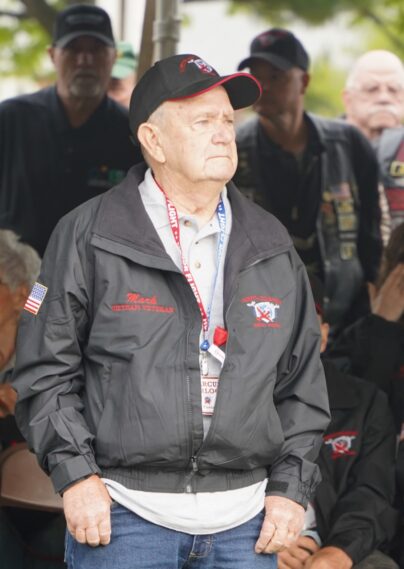 Marcus Spurlock – US Air Force 1964-1966 Vietnam
Marcus Spurlock – US Air Force 1964-1966 Vietnam
Marcus would head to the recruiting office the day John F. Kennedy was assassinated with three of his friends. The Air Force would become their choice as they were the first able to get them into service.
Headed to Lackland AFB for basic training, Marcus would become the squad leader. Even despite all the physical training and exercise of basic training, Marcus would be the only one that would manage to gain weight during this training.
After basic, it was off to Chanute AFB for 6-months of training in aircraft maintenance. Leaving temperatures in the 80’s, it would be a jolt to arrive in Illinois to negative 10-degree weather. After the completion of training, Marcus would be assigned to Plattsburgh AFB. Here he would be performing his full-service assignment, except for several 90-day TDY trips to England. During a trip to England, he would get a week’s leave, and although he couldn’t share any of those stories, he would say that he had a good time.
While in Plattsburgh, the base would be on alert, which requires that he be within 25 miles of the base. Marcus would head slightly out of the range, as he decided to head to Kentucky, which probably wouldn’t have been a problem until the base was alerted to a speeding ticket he received in Cincinnati, Ohio.
Marcus would choose to make the North Country his home after exiting from the Air Force. To this day, he maintains close relationships with friends, located both close and far, formed during his service years.
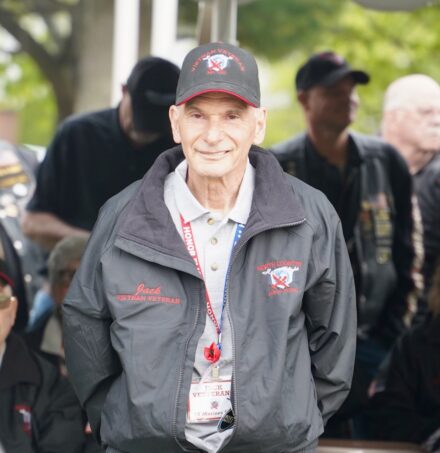 Jack Verterano – US Marine Corps 1971-1973 Vietnam
Jack Verterano – US Marine Corps 1971-1973 Vietnam
Jack knew as a young boy, just 6 years of age, that he was going to serve in the Marine Corps. He remembers a woman hearing his youthful wish to serve his country. She would tell him and his mother that he should not have such thoughts. At 18, he would go with friends to sign up. One year later he would see one of these friends assigned to the same base.
He would complete his basic training at Parris Island, then move on to Camp LeJeune for advanced infantry training. Before a “Slide for Life” training session, Jack would loan out a pair of socks to a barracks mate, who would attempt to return them, nasty and green, after finishing the course. Even today, he can still remember the “pop, pop, pop” of gas mask training and everyone attempting to quickly get their gas masks on.
After infantry training, Jack would receive an assignment as a cook. He would head to Cherry Point. There he would receive orders to cook for the barracks and the hospital. Even though many would say never volunteer, Jack never doubted his decision to volunteer when offered an opportunity.
Jack was honored and proud to serve his country in any capacity that they found necessary. He would do it all again, regardless of duty assignment given.
Posted: May 18th, 2025 under Adirondack Region News, City News, Community Events, Northern NY News, Peru News, Peru resident news/accomplishments, Peru/Regional History, Veterans' News.
